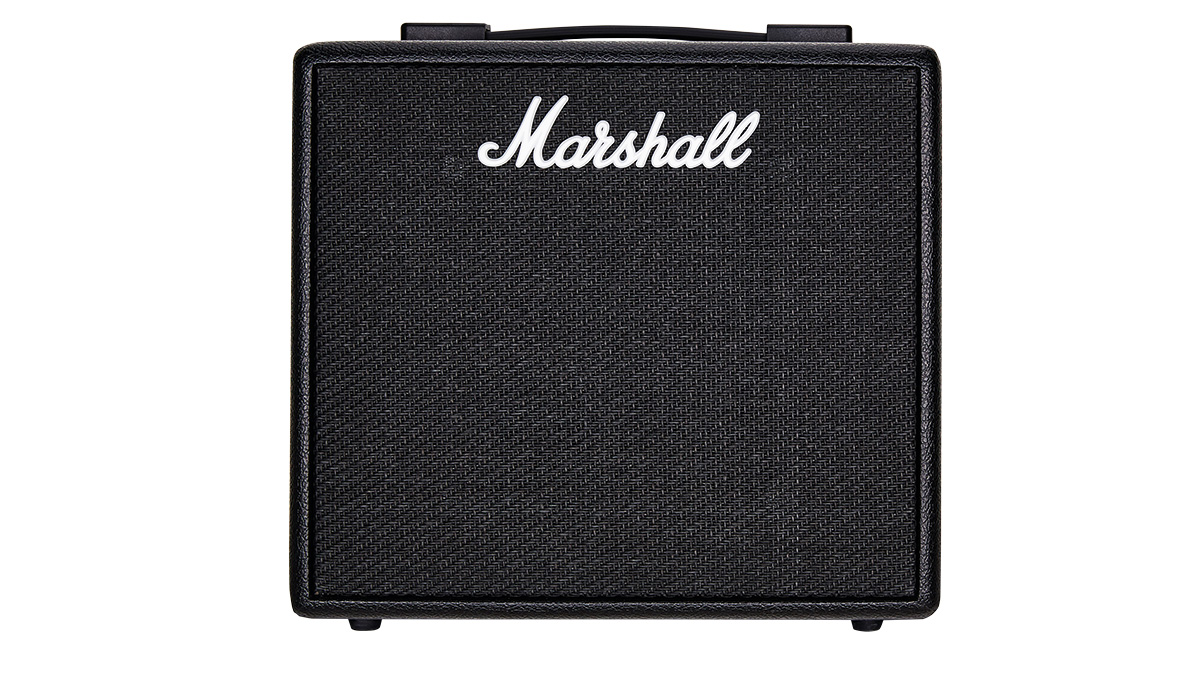MusicRadar Verdict
With a range that suits beginners as well as working players, if you want the Marshall legend on a budget, then there's no real alternative.
Pros
- +
Generally excellent choice of amp and effects models; compact and very portable
Cons
- -
It's ideal for home practice and recording, but not enough power for live use.
MusicRadar's got your back
Neil Young released an album with Crazy Horse in 1979 called Rust Never Sleeps.
The words in this title ring true with technology, and it's just as relevant for guitar amps, as itis for television sets or mobile phones. In recent years, there's been a jump in the quality of digitally modelled sounds, with several manufacturers incorporating a Digital Signal Processor (DSP) front end into a head or combo format. Most major manufacturers now have a product such as this in their catalogue.
One exception, until recently, was Marshall. But that's now changed with its latest debut, the all-new Code series, and here we place the spotlight on the Code25.
The Code amps have a sleek, modern look about them that's still unmistakably Marshall, with 'none more black' vinyl and grille cloth, topped by the famous white script logo.
An anodised gold panel fitted with slightly squatter versions of Marshall's standard gold-top control knob sits in a cutaway on the cabinet top panel. All familiar stuff, which puts any Marshall devotee at ease.
The cabinet is a mix of particle board and MDF, with the electronics mounted on four PCBs. There's one for the built-in power supply screwed to the inside of the cabinet, while the other three are for the controls, digital preamp and solid-state power stage, all connected to the underside of the control panel. Everything looks typically neat, with minimal wiring between the boards.
The Code25 comes with a slightly rearranged control layout in comparison to the recently-reviewed Code50, with one knob doubling the preset and edit functions, together with a smaller LCD display. Otherwise, the controls and features are practically identical.
Perhaps the most interesting connection on the Code combos is the one you can't see, which joins the Code to any mobile device running Marshall's Gateway app, via Bluetooth. Gateway allows instant and precise editing of all amp parameters, as well as streaming audio from your mobile device to play along with.
Sounds
The first contact any potential buyer will have with the Code amps will probably be using the factory presets, and the Code's 'out of the box' sounds are mostly very good, with several excellent and immediately usable emulations of classic Marshall tones.
The all-important preset 00 'EL34 Heaven', which is the first one most new users will hear, is instant guitar warrior self-gratification, with tons of distortion, sustain, reverb and delay blended into a truly epic solo sound!
Meanwhile, preset 01 'Plexi Classic' is a superb stripped-back emulation of a 1959 Super Lead plugged into a 1936 cabinet, enhanced with a touch of room reverb, which we instantly put to use on a recording project.
The preamp, power amp and cabinet models are equally rewarding to use, while the Code's built-in effects generally live up to the same standard, with excellent studio-quality reverbs and delays. Some of the modulation effects could do with a little more analogue warmth, but at the Code's price-point we're not going to complain.
The Gateway app works on Android and iOS platforms. We loaded it onto an iPhone running the latest iOS and hooked up to the Code50 using Bluetooth.
Now, Apple isn't known for being particularly Bluetooth-friendly, but after a couple of false starts the Code and Gateway were talking to each other like old friends. We're highly impressed with the attention to detail that's gone into the Gateway app's design.
The app controls all the amp functions seamlessly in real-time, increasing or decreasing parameters with a simple swipe action, or if needed a tap-and-hold brings up a key pad for precise value entry - handy when setting delay times.
Calling up different amp, cabinet and effects models is intuitive and fast, aiding the creative process, as is the case with Gateway's audio streaming capability, playing back music stored on your mobile device to jam along with.
Being able to edit and store your favourite patches on your phone and share them with other Code users is a great touch as well. The Gateway app makes the Code amps significantly more flexible and powerful.
And it's easier to use than editing the amp directly off its control panel - once it's hooked up, it works without any issue.
The Code's USB socket is there to hook up to a PC or DAW for recording and transmits audio in both directions, as well as allowing users to update firmware. The mp3 input will work with any player that uses a 3.5mm jack, while the headphones socket also doubles as a handy line out.
The real-world sounds of both combos are slightly different. In comparison to the Code50, the Code25's slightly more squashed frequency response and lower output makes it ideal for recording or as a home practice amp.
Fans of the Marshall sound no longer need to look to the competition for the best Marshall amp models - Code has them all, along with several others that combine for a limitless choice of sounds.
The amps are logically laid out, good looking and keenly priced, while the cherry on the top has to be the Gateway app, which is unequalled for ease of use and design.
- Explore more of the best guitar amps under $300/£300










